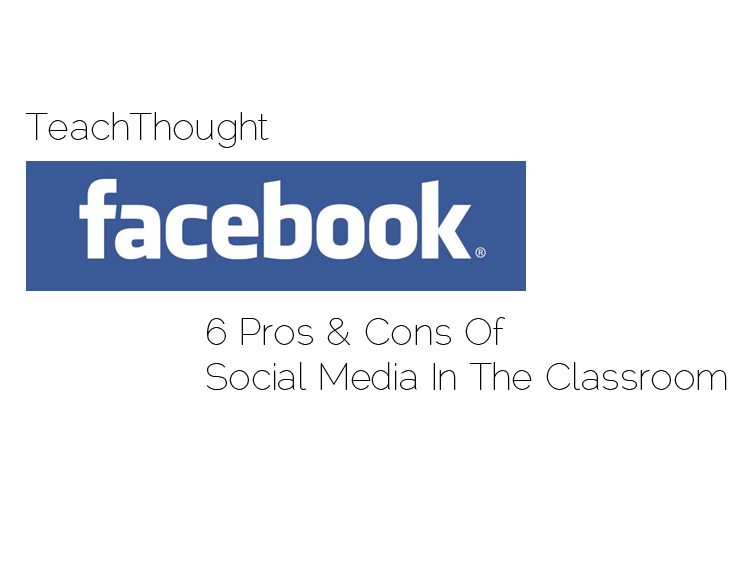 6 Pros & Cons Of Social Media In The Classroom
6 Pros & Cons Of Social Media In The Classroom
contributed by Aimee Hosler
Like it or not, American youth are decidedly online. According to a 2013 report by Pew Research, 78 percent of teens have cell phones, and almost half of those are smartphones — which means they can log onto the Internet virtually anywhere, any time. You can bet many of those students are also using social media tools like Facebook, Twitter, and Snapchat — maybe to excess.
These statistics might make educators a little uncomfortable. After all, uncontrolled social media can be a major distraction in the classroom and open the doors for cyberbullying or the sharing of inappropriate Web content. When looking at social media from this perspective, it is understandable why many teachers choose to ban these technologies from their classrooms entirely. This may be a mistake.
In fact, with a little planning, social media can be a powerful teaching tool.
Social media in the classroom isn’t necessarily good or bad; it depends on how it’s used. Mashable reports that in 2010, Portland-based teacher Elizabeth Delmatoff launched a social media pilot program in her seventh-grade classroom. Thanks to her carefully crafted lesson plans and selective media choices, Delmatoff’s students’ grades and attendance improved dramatically, and one-fifth of students began completing extra assignments for no credit at all. Here are four reasons to consider following her lead in your own classroom.
See also The Pros & Cons Of Children On Social Media
The Case For Social Media In The Classroom
1. Engaged students are more successful
Delmatoff told Mashable that at one point, students were nervous their blogging assignments might get them into trouble–because they were so fun! Social media allows students to flex their creative juices and interact with their peers in a way that just cannot be replicated in the classroom. By engaging students in this way, learning outcomes can improve if the learning objectives align with social media platform’s features and ‘climate.’
2. Social media teaches important life lessons
While the scale of the lessons can quickly get out of hand if not planned and controlled for, the fact of the matter is that social media can teach (a sometimes exaggerated form of) life lessons.
3. It’s ‘real world’
Part of the reason social media can teach these important life lessons is that it’s ‘real’ to many students. It’s credible and authentic and functions in a way familiar to them and their experiences online researching ideas, messaging with friends–and yes, wasting time.
Classroom Social Media Risks — And How To Beat Them
There is a reason why, according to CNN, a California school district recently paid an outside firm $43,000 dollars to monitor students’ social media behaviors: These technologies can be abused and exploited. Teachers understand that as well as anyone, but that does not mean they need to ban it entirely. Here are some of social media’s greatest risks (and how to prevent them).
1. The Internet is a new medium for bullying
There is little denying the social media makes it easier for students to bully or abuse their peers — or even their teachers. The Cyberbullying Research Center reports that in 2010, 20 percent of students reported being the victims of cyberbullying, and just as many admitted to being cyberbullies.
The group notes other studies place these estimates as high as 40 percent. Fortunately, the center also offers resources for teachers who want to prevent online bullying among their students, including lists of warning signs, teaching materials for lessons in Internet safety, and even scripts for parents and teachers who want to approach the subject with their students.
2. Social media can be a time suck
Anyone with a Facebook account knows that what was meant to be a quick peek at friends’ activity can turn into an hour-long rabbit hole. Teachers can prevent social media from becoming a distraction or time-waster in their classrooms by setting clear rules about how and when these technologies should be used, and by selecting classroom-endorsed tools widely. More on that next.
3. The Internet is a dangerous place
Yes, the Internet is chock full of inappropriate images and language, viruses and scams. Thankfully, notes Mashable, the Children’s Internet Protection Act helps protect students from much of these dangers by blocking social media sites like Facebook and MySpace in public schools. Tools that help teachers block unwanted content in the classroom are available. (More on this soon.)
Planning Makes (Virtually) Perfect
If the points above teach us anything, it is that social media can be an important learning tool when used appropriately — something that demands a great deal of planning and Internet savvy. Do your research and plan for potential problems before introducing social media to your students. Ironically, one of the best ways to do that is to flex your own social media muscles, joining communities of educators willing to share their own ideas and experiences.
Aimee Hosler is a writer and mother of two living in Virginia. She specializes in a number of topics, but is particularly passionate about education and workplace news and trends. She contributes to several websites, including OnlineSchools.com; 6 Pros And Cons Of Social Media In The Classroom

